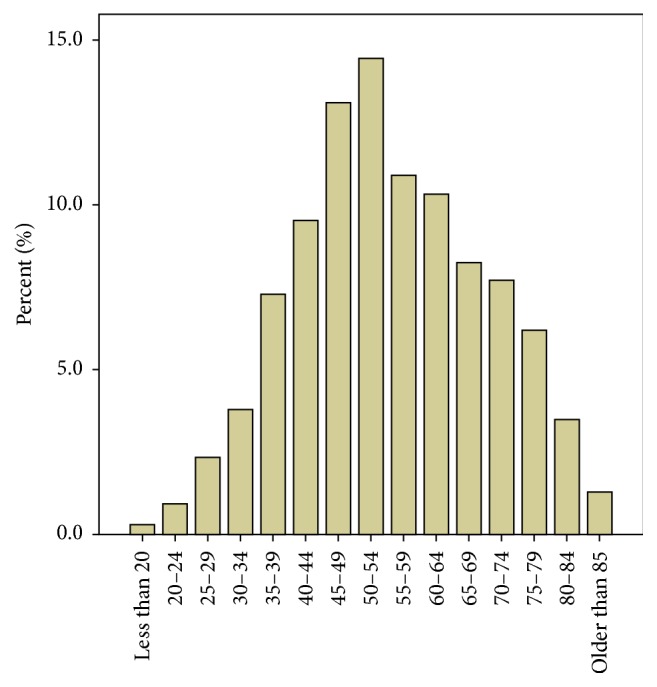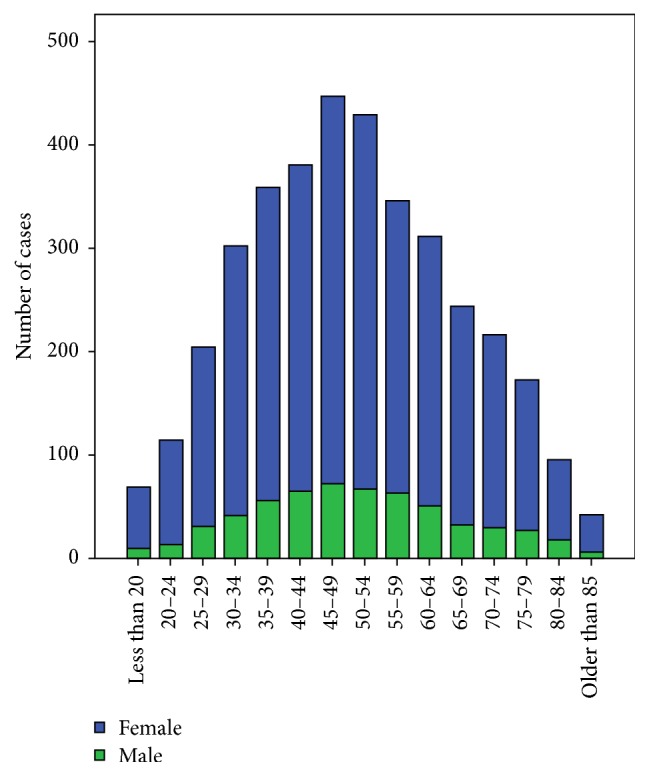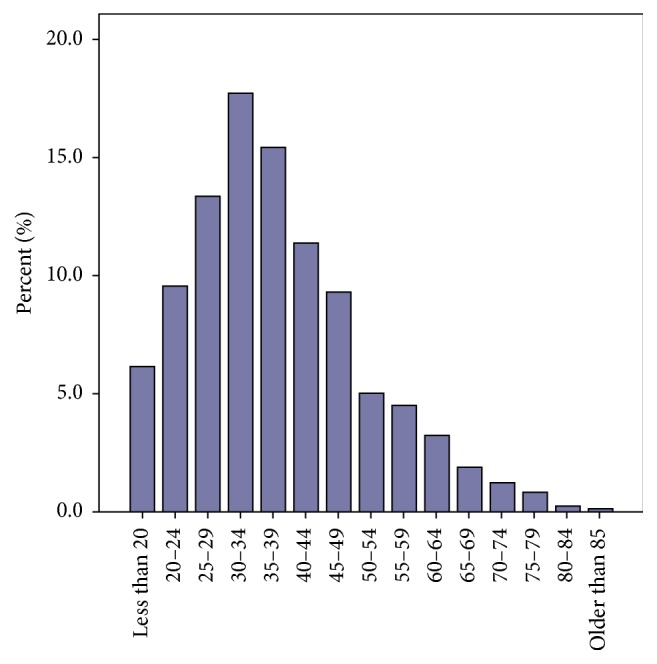苏格兰四十年来Graves病管理实践的变化
IF 1.7
Q4 ENDOCRINOLOGY & METABOLISM
引用次数: 7
摘要
关于格雷夫氏甲状腺毒症的最佳治疗方法,在临床实践中一直存在争议。本研究旨在确定过去四十年来苏格兰泰赛德格雷夫甲状腺毒症治疗实践的变化。方法。对“苏格兰自动随访登记”(SAFUR)进行查询,以确定1968年至2007年期间接受格雷夫甲状腺毒症治疗的所有患者。患者按年龄分为A ~ D组。研究患者的人口学概况、治疗方式、放射性碘(RAI)剂量和复发率,并采用χ(2)检验和方差分析,采用SPSS v15.0进行比较。p值< 0.05为显著性。结果。在过去的40年里,总共有3737名患者被诊断为格雷夫氏甲状腺毒症。RAI的使用率从A组的43.1%上升到D组的68% (p < 0.001)。RAI剂量增加(p < 0.001), RAI剂量越高,复发率越低。随着时间的推移,手术干预率从55.3%下降到12.3% (p < 0.001)。结论。对格雷夫氏甲状腺毒症患者的大型数据集的分析表明,RAI作为首选的一线治疗方法的使用越来越多。此外,使用单一高剂量的RAI和采用甲状腺全切除术可降低复发率。本文章由计算机程序翻译,如有差异,请以英文原文为准。



Change in Practice over Four Decades in the Management of Graves' Disease in Scotland.
There is continuing debate on the optimal treatment for Grave's thyrotoxicosis with a resultant variation in clinical practice. The present study aimed to ascertain changes in practice in the treatment of Grave's thyrotoxicosis in Tayside, Scotland, over the past four decades. Methods. The “Scottish automated follow-up register” (SAFUR) was queried to identify all patients treated for Grave's thyrotoxicosis from 1968 to 2007 inclusive. Patients were divided into 4 groups (Groups A to D) according to the decades. Demographic profile, treatment modalities, radioactive iodine (RAI) dose, and recurrence rates were studied and outcomes were compared by χ 2 test and ANOVA using SPSS v15.0. A p value of < 0.05 was considered significant. Results. Altogether, 3737 patients were diagnosed with Grave's thyrotoxicosis over the 4 decades. Use of RAI has increased from 43.1% in Group A to 68% in Group D (p < 0.001). The dose of RAI has increased (p < 0.001) and there has been a reduction in recurrence rate with higher dose of RAI. Surgical intervention rates decreased from 55.3% to 12.3% (p < 0.001) over time. Conclusions. Analysis of a large dataset of patients with Grave's thyrotoxicosis suggests increasing use of RAI as the preferred first line of treatment. Furthermore, using a single higher dose of RAI and adoption of total thyroidectomy have decreased recurrence rates.
求助全文
通过发布文献求助,成功后即可免费获取论文全文。
去求助
来源期刊

Journal of Thyroid Research
ENDOCRINOLOGY & METABOLISM-
CiteScore
4.40
自引率
0.00%
发文量
10
审稿时长
17 weeks
 求助内容:
求助内容: 应助结果提醒方式:
应助结果提醒方式:


